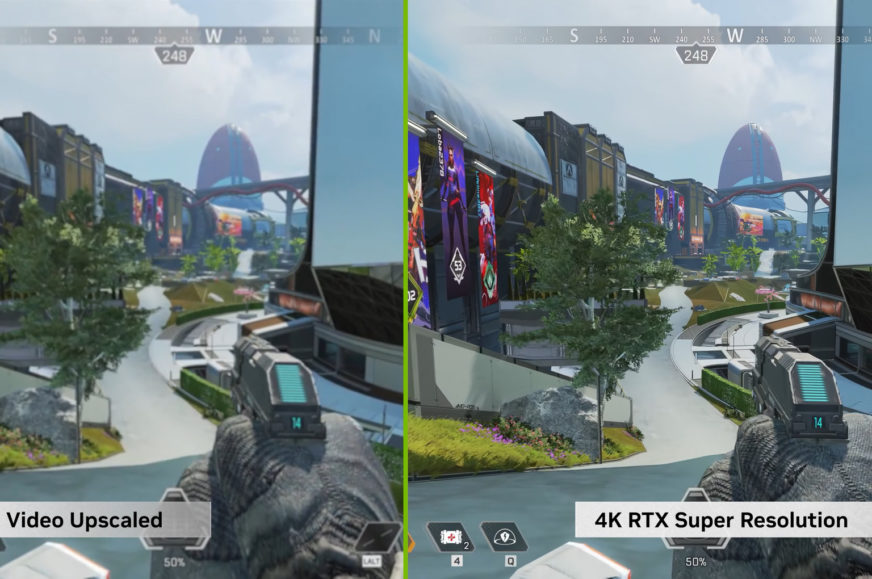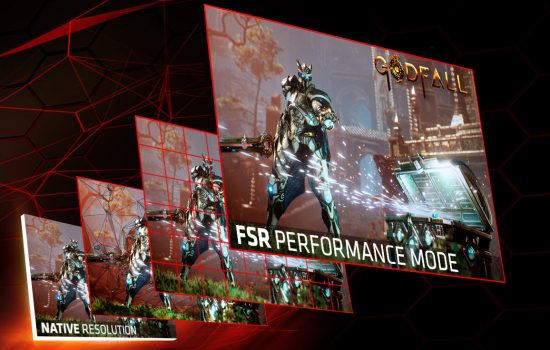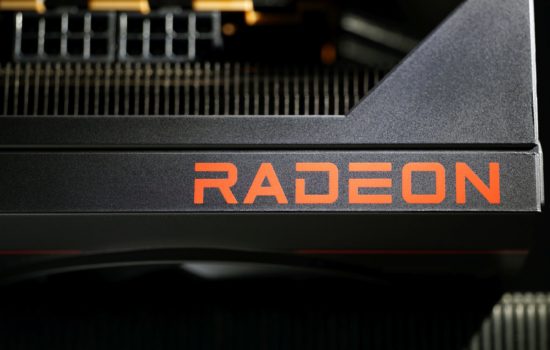Nvidia's AI web video upscaling gets improved 1.5 version
Earlier this year, Nvidia released an upscaler that uses its GPUs for video on websites like YouTube and such. The filter uses similar AI technology to the used in DLSS 2.x (albeit with limitations), and thus requires a GPU with tensor cores. But only the newer GeForce RTX 3000 and 4000 generations were supported initially. But now Nvidia is releasing version 1.5 for older Turing cards as well. And it also has other improvements.
We initially covered the Nvidia RTX Video Super Resolution (or RTX VSR) feature here. In its original form, it was aimed at upsaling video in Google Chrome-based browsers, but in the meantime it gained the ability to be used in VLC for local video files playback.
Now this feature has received an update to RTX Video Super Resolution 1.5, which is already integrated into the currently available Nvidia GPU drivers. Its main new feature for many will be that it can now be enabled on older (2018–2019) Nvidia GeForce RTX 2000 generation graphics cards with Turing architecture. For now, this feature is only enabled in the game drivers, but it should also be added in the “Nvidia by Studio” drivers sometime in november.
Better quality and anti-aliasing even without scaling
But this support for graphics cards with Turing chips is not the only new feature coming in this update. According to Nvidia, the AI has been further trained, updated in version 1.5 to achieve better image quality. It should, for example, preserve detail in the video a little better.
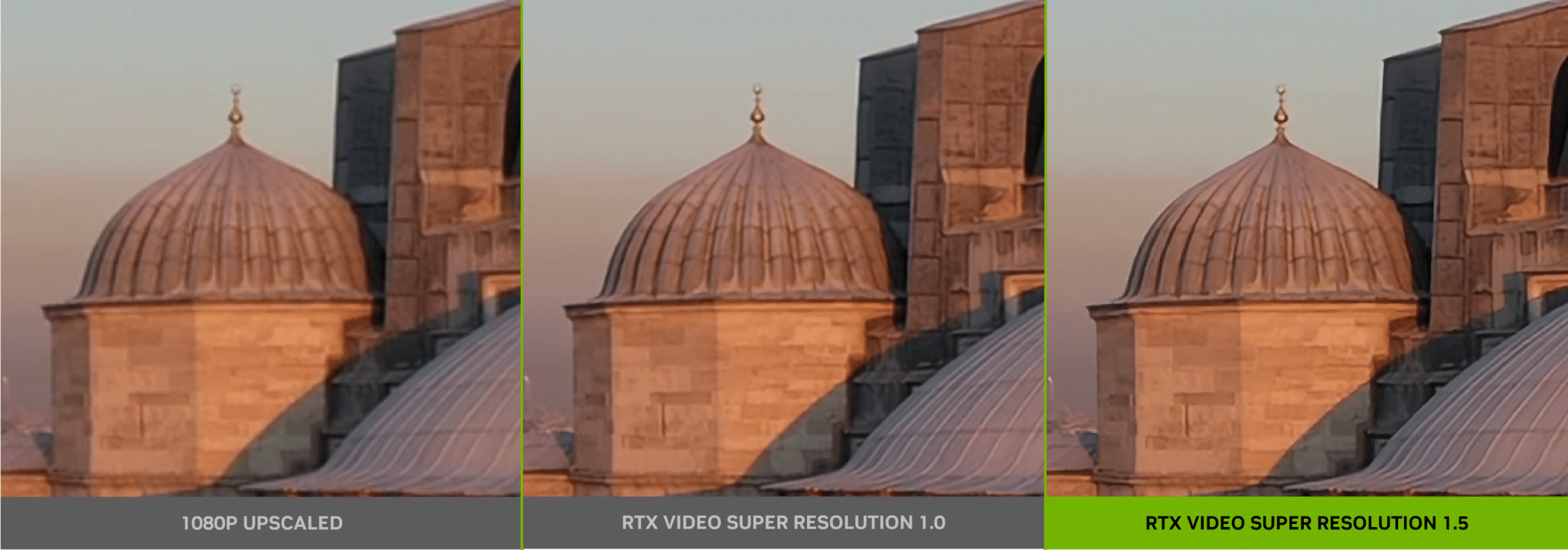
With any post-processing like RTX VSR, there’s always a risk that legitimate detail will be blurred when removing compression artifacts. AI filters, like conventional filters, can also produce an unnatural look (sometimes called “oilpaint” effect). RTX VSR 1.5 should hopefully bring some improvements in this area, with the updated AI model less likely to also damage detail in video when removing artifacts, according to Nvidia.
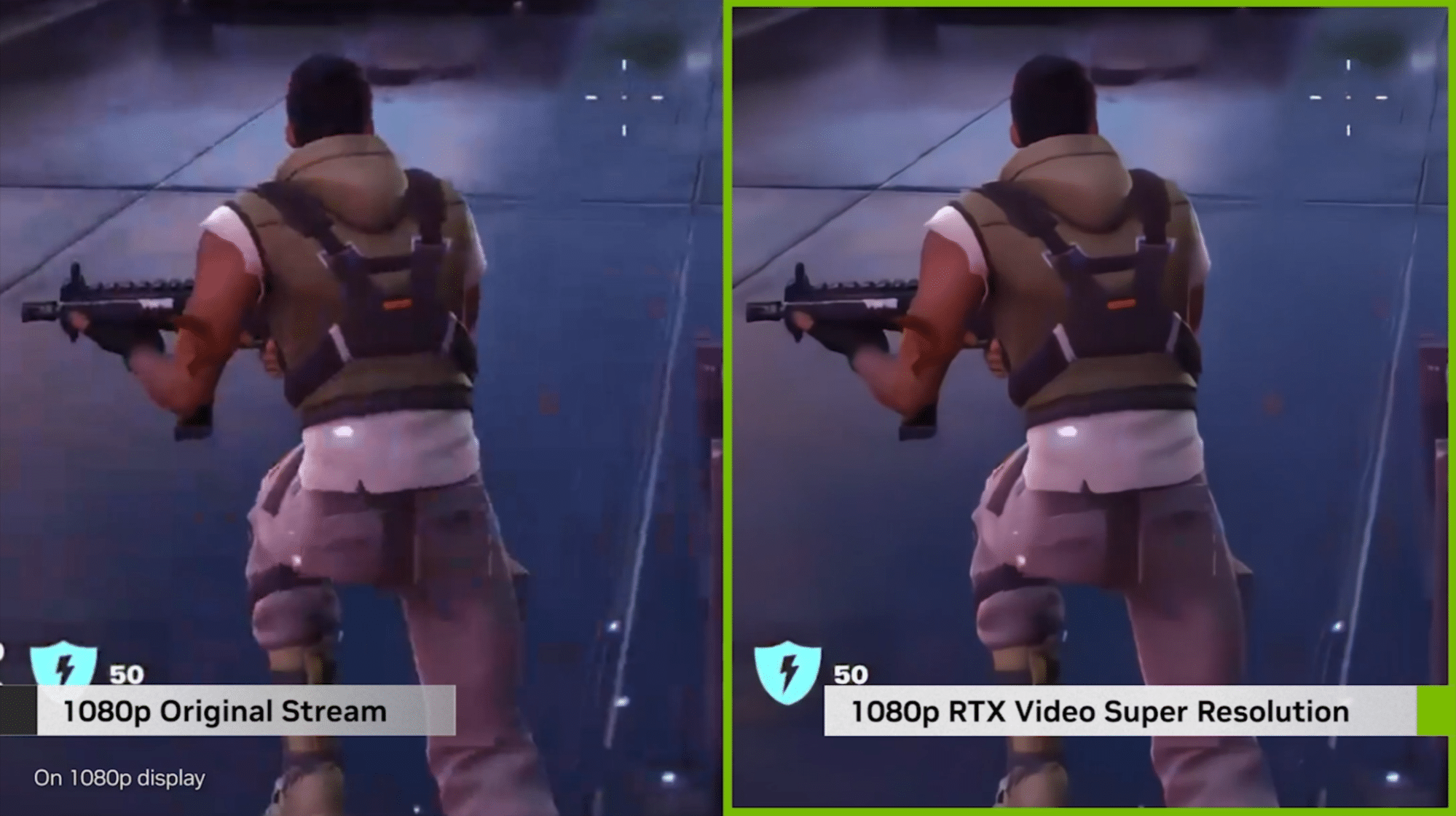
The original RTX VSR also did not separate the scaling feature and the anti-aliasing and artifact-removing post-processing functions on top of it. If you would like to use its enhancing effect without scaling, i.e. on videos that are already at a higher resolution, just solely to remove compression artifacts, this is now also possible in RTX VSR 1.5. Apparently, when you activate this RTX Video Super Resolution in the browser, all 1080p videos (even if you only have a FullHD display) should now also be automatically processed by the RTX Video Super Resolution filter.
Source: Nvidia
English translation and edit by Jozef Dudáš
⠀





